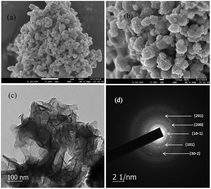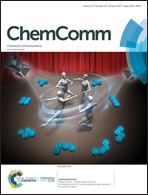An electron trapping protocol of FePW12O40 microflowers with dual catalytic properties: visible light photodegradation of amphetamine and electrocatalytic oxygen evolution†
Abstract
We have demonstrated the development of a novel polyxometalate compound, FePW12O40, for photocatalytic degradation of amphetamine and electrocatalytic oxygen evolution. It showed robust optoelectronic properties, which can be attributed to numerous electron trapping sites created by atomic level defects in the microflower-like architecture.



 Please wait while we load your content...
Please wait while we load your content...